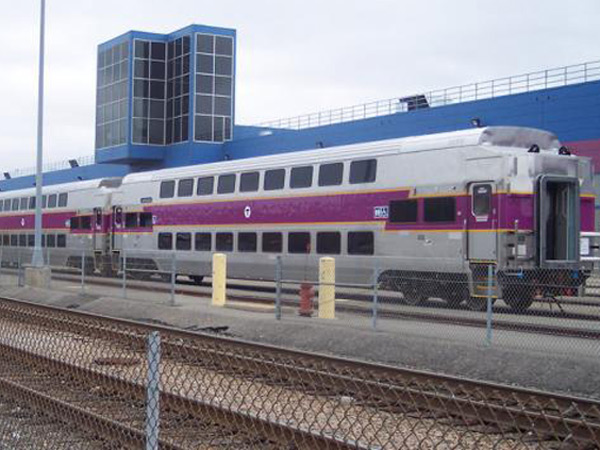Things are looking up for regional rail.
In an attempt to increase passenger capacity, SEPTA is in
the early stages of considering bi-level coaches. With an upstairs and a
downstairs, these coaches could transport anywhere from 120 to 170 passengers.
Most important to SEPTA, they would provide an efficient remedy to booming
regional rail ridership. Silverliner Vs can seat 109 passengers.
Last year alone, SEPTA passengers took 36 million regional
rail trips - a record high on the system that has seen 50 percent regional rail
ridership growth in the last 15 years. Now, aided by Act 89 funding, SEPTA is
looking to increase its capacity and better serve those customers. One way the
authority plans to do so is to build up.
"The real elegant solution to dealing with capacity
issues, the most efficient one is to utilize the infrastructure you have but go
up in the air with the cars so you can increase seating," said Jeff
Knueppel, deputy general manager.
With more passengers, the regional rail network needs more
seats. One option might be to add more cars to the trains that are already
running, but that would require longer platforms that would only be used during
rush hour. Plus, in areas like the section between Wayne Junction and Glenside
stations, SEPTA has two tracks and more than 100 trains scheduled on each track
during rush hour. Lengthening those trains could lead to traffic jams.
Instead, SEPTA is looking to bi-level coaches, similar to
those New Jersey Transit (NJT) and Massachusetts Bay Transit Authority (MBTA)
are already using. NJT's coaches carry between 120 to 140 passengers, and
MBTA's cars carry up to about 170 passengers.
Clearance
One big question is: Will bi-level coaches fit on SEPTA's
system?
"It's very challenging, and if you were to stand on the
platform at Market East and look at a single-level train, you'd think to
yourself, how are you going to get another level?" Knueppel said.
SEPTA is conducting a clearance study, and while that study
is not complete, solutions to low clearance might include "slick
design" of the coaches, moving the catenary wires or lowering portions of
the track. Knueppel said it does not appear that increasing clearances in this
way would require very expensive projects.
Seating
At this point, SEPTA is looking to procure about 36 bi-level
coaches. The authority has not decided on what seating arrangement it will go
with though, so it is unclear how many additional seats the fleet will provide.
"We're looking to carry more [passengers] per car, but
we don't want to go crazy with trying to cram people into cars," Knueppel
said.
Cost
SEPTA is assuming the coaches will cost somewhere between
$2.5 million and $3 million per car.
In comparison, the Silverliner Vs cost SEPTA an average of
approximately $2.3 million per vehicle, but the price has since gone up.
Hyundai Rotem, which manufactured SEPTA's Silverliner Vs, is working on similar
vehicles for the commuter rail system in Denver. That $200 million contract for
50 vehicles puts the current average cost of a Silverliner V in the $4 million
range.
"It's a very efficient solution," Knueppel said.
"They are cheaper. They provide more seating, and you're not maintaining
motors on everyone of the cars."
Electric locomotives
Procuring the bi-level coaches is slated for phase one of
SEPTA's "Catching Up" plan, the capital improvement plan targeting
the system's most pressing needs. Also in phase one, SEPTA plans to procure new
electric locomotives, which will increase that fleet from eight to 12. The
electric locomotives, along with SEPTA's 53 push-pull locomotives, are used to
move passenger coaches throughout the system, and these new electric
locomotives will replace SEPTA's current AEM-7 electric locomotives, built in
1987.
Knueppel said the new locomotives will be "a quantum
leap forward from the AEM-7s."
If things go well, SEPTA may issue a proposal for the
locomotives this year. Shortly after that, SEPTA would work on a proposal for
the bi-level coaches.
In later phases of “Catching Up,” SEPTA will procure new
trolleys and Silverliner VIs.
"I know the issue has been around core infrastructure
and existing things, but at the same time, people would be very critical of us
if we weren't also… looking to do a certain portion of work in areas that would
allow us to keep expanding ridership on the railroad," Knueppel said.
Source: Philly.com

No comments:
Post a Comment